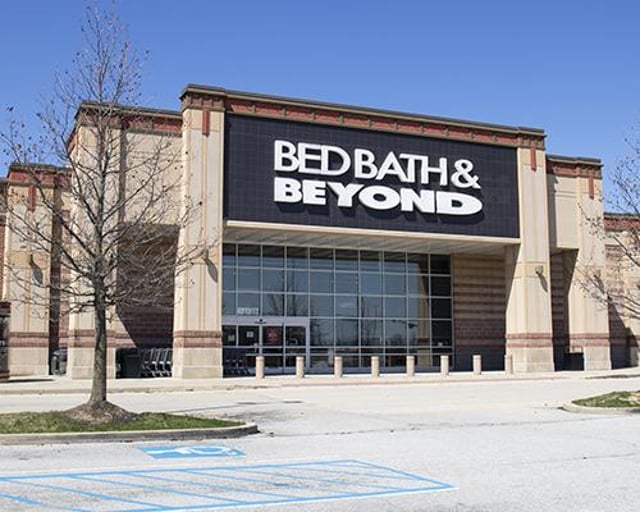Bed Bath & Beyond avoids bankruptcy; to shrink its store footprint in new plan
Bed Bath & Beyond revealed its latest plan to improve its ailing business on the heels of successfully completing a last-ditch attempt to avoid bankruptcy.
The embattled home goods retailer on Tuesday said that it completed an equity offering of preferred stocks and warrants that raised about $225 million in cash, with an additional $800 million more to come in future installments. (Bed Bath & Beyond also secured another $100 million loan from Sixth Street Partners, one of its lenders. )
“This transformative transaction will provide runway to execute our turnaround plan,” stated president and CEO Sue Gove.
Bed Bath & Beyond also gave a “strategic update” on its plan to save its ailing business that included some new details. The company has initiated "incremental" store closures in its namesake banner that will shrink its total U.S. store to approximately 360 Bed Bath & Beyond stores and approximately 120 Buybuy Baby stores. (The retailer operated 762 stores in late November 2022, although the company has since closed nearly 100 stores.)
"In response to evolving shopping preferences today, this target store base includes the company's most profitable locations and best geographic presence for customers that can enable an optimal omni-experience," the retailer stated. "The digital channel is expected to rise to a higher proportion of sales with improved channel profitability."
Last week, Bed Bath & Beyond announced it was shuttering its Harmon chain and closing another 150 “lower-producing” Bed Bath & Beyond stores. (Click here for a list, updated as of January 30, of the company’s store closings.)
In its latest update, Bed Bath & Beyond said that, as it moves forward, it will pursue “asset-light” inventory management strategies to drive growth, including vendor-direct-to-consumer and marketplace sales, and will target “innovative collaborations.” It also plans to streamline its supply chain, technology, expense structure and business processes as it realigns operations.
“We are optimizing our store fleet and supply chain and continuing to invest in our omni-always capabilities,” stated Gove. “This will enable us to better serve our customers, and grow profitably, by directing merchandise where and how they want to shop with us. We are also prioritizing availability of leading national and emerging direct-to-consumer brands."
The fresh capital infusion will be used to pay off some of the chain’s debts. Bed Bath & Beyond defaulted on a loan with JPMorgan last month and missed a $25 million interest payment on Feb. 1. At the end of January, the company warned, for the second time in less than a month, that it was considering filing for bankruptcy.
“At this time, the company does not have sufficient resources to repay the amounts under the Credit Facilities and this will lead the company to consider all strategic alternatives, including restructuring its debt under the U.S. Bankruptcy Code,” Bed Bath & Beyond stated in an SEC filing at the time.
Bed Bath & Beyond also said Tuesday that it has appointed bankruptcy expert Holly Etlin as interim CFO. Etlin, who served as chief restructuring officer at Tailored Brands, has been a partner and managing director of AlixPartners since January 2007.
She replaces Laura Crossen, who was tapped as interim finance chief of Bed Bath & Beyond in September following the death of CFO Gustavo Arnal.
B. Riley Securities acted as the sole bookrunner for the offering.


